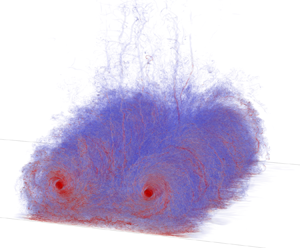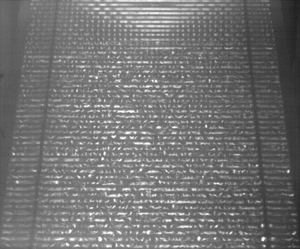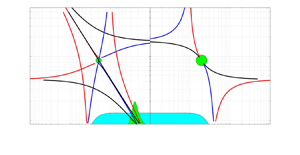doi:10.1017/jfm.2024.387 Liu et al. Turbulence and mixing from neighbouring stratified shear layers
JFM Papers
Linear dynamics of a thick liquid layer subjected to an oblique temperature gradient
-
- Published online by Cambridge University Press:
- 22 May 2024, A32
-
- Article
-
- You have access
- HTML
- Export citation
Energy stability of magnetohydrodynamic flow in channels and ducts
-
- Published online by Cambridge University Press:
- 22 May 2024, A33
-
- Article
-
- You have access
- HTML
- Export citation
Turbulent vortex pair at equilibrium and its interaction with the ground at
 $Re_{\varGamma } = 2 \times 10^5$
$Re_{\varGamma } = 2 \times 10^5$
-
- Published online by Cambridge University Press:
- 23 May 2024, A34
-
- Article
-
- You have access
- HTML
- Export citation
Bubble departure and sliding in high-pressure flow boiling of water
-
- Published online by Cambridge University Press:
- 23 May 2024, A35
-
- Article
-
- You have access
- HTML
- Export citation
Instability of a weakly viscoelastic film flow on an oscillating inclined plane
-
- Published online by Cambridge University Press:
- 23 May 2024, A36
-
- Article
-
- You have access
- HTML
- Export citation
Gap in drop collision rate between diffusive and inertial regimes explains the stability of fogs and non-precipitating clouds
-
- Published online by Cambridge University Press:
- 23 May 2024, A37
-
- Article
-
- You have access
- Open access
- HTML
- Export citation
Modelling the first droplet emission from an electrified liquid meniscus hanging at the nozzle tip
-
- Published online by Cambridge University Press:
- 23 May 2024, A38
-
- Article
-
- You have access
- HTML
- Export citation
Surface turbulence in film flow over periodic ripples
-
- Published online by Cambridge University Press:
- 23 May 2024, A39
-
- Article
-
- You have access
- Open access
- HTML
- Export citation
Modal stability analysis of toroidal pipe flow approaching zero curvature
-
- Published online by Cambridge University Press:
- 24 May 2024, A40
-
- Article
-
- You have access
- Open access
- HTML
- Export citation
Coupled bulk and interfacial transport of surfactants governs the settling of a drop towards a wall
-
- Published online by Cambridge University Press:
- 24 May 2024, A41
-
- Article
-
- You have access
- HTML
- Export citation
On the selection of Saffman–Taylor viscous fingers for divergent flow in a wedge
-
- Published online by Cambridge University Press:
- 24 May 2024, A42
-
- Article
-
- You have access
- Open access
- HTML
- Export citation
Generalized transport characterizations for short oceanic internal waves in a sea of long waves
-
- Published online by Cambridge University Press:
- 24 May 2024, A43
-
- Article
-
- You have access
- HTML
- Export citation
On wave-driven propulsion
-
- Published online by Cambridge University Press:
- 24 May 2024, A44
-
- Article
-
- You have access
- Open access
- HTML
- Export citation
Front Cover (OFC, IFC) and matter
FLM volume 987 Cover and Front matter
-
- Published online by Cambridge University Press:
- 29 May 2024, p. f1
-
- Article
-
- You have access
- Export citation



































